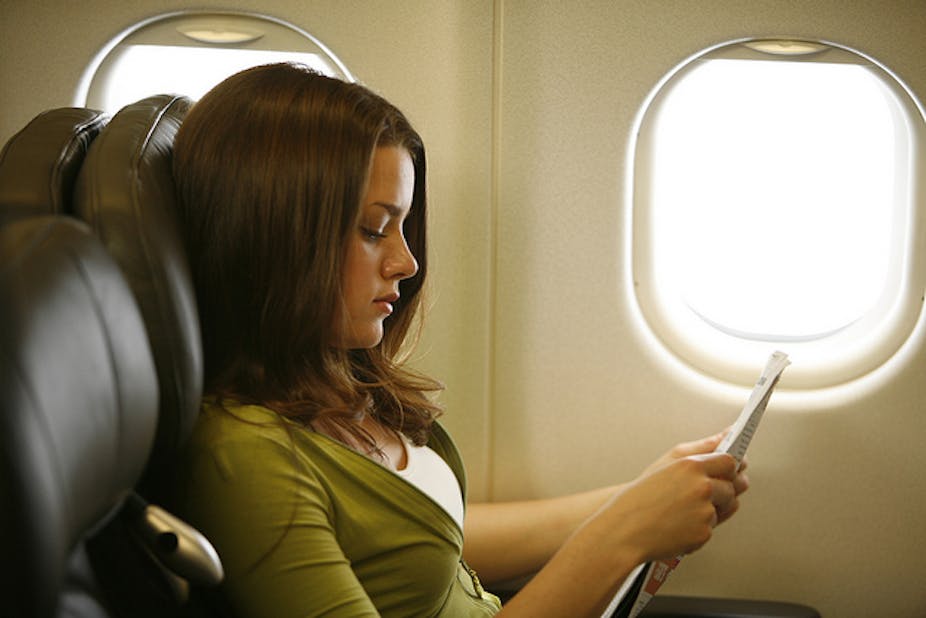At the start of The Hitchhikers Guide to the Galaxy, the ever-resourceful Ford Prefect buys four packets of salted peanuts, ostensibly to prevent motion sickness. We sometimes get them on flights too. But do they work or is it just science fiction?
Motion sickness is a common problem, not just for hitchhikers. Planes, boats, cars and even our television screens are moving faster and more frequently than ever before. And so are our stomachs.
Nausea is triggered in some people when there is a mismatch in what their senses are telling them about the world around them. When taking off in an aircraft, for instance, the vestibular system in the ears detects the plane’s acceleration and tells the brain you are moving. But the eyes send a different message.
The same sort of mismatch can occur when watching a moving image on the big screen or in virtual environments (known as cyber sickness) – it looks like you’re moving, but your senses are telling you that you’re sitting still.
Given the right (or wrong) stimulus, almost everyone can be made to feel unwell. Some people are troubled by motion sickness more than others, especially children and those who also get migraines. Women may be more vulnerable to travel sickness than men, especially Asian women. Infrequent travellers may also have more problems, as habituation usually improves tolerance for bumpy take-offs or landings.

The simplest way to reduce motion sickness is to synchronise your senses. If you’re in a car, look forward rather than out the side window, where things are moving fast. (I know I’m always worse in the back seat). Fixing on a stable visual reference point, such as the horizon, also helps.
Avoid things that exacerbate the conflict of your senses, such as reading or texting in a moving car.
Another allopathic trick is to counteract the motion sickness. Feelings of queasiness are partly a result of the sympathetic nervous system being activated (the same fight or flight response that makes you feel sick when nervous). So things that activate the opposing parasympathetic system – slow, deep breathing, cooling your face and listening to relaxing music – can lessen the effects of motion.
Eating a (small) meal five to 45 minutes before the stimulus can also reduce the severity of motion-induced nausea and vomiting. So if budget-conscious airlines don’t feed us, it’s hardly a wonder we are sick of flying.
It’s thought that activating the parasympathetic nervous system, specifically at the stomach level, stimulates normal rhythmic activity and suppresses the rapid, irregular contractions associated with feeling sick (known as gastric tachyarrhythmia).

This effect partly depends on what you eat. Tasty, protein-rich snacks seem to be the best. This may be because protein, more than other nutrients, stimulates the stomach hormone, gastrin, which triggers regular stomach contractions.
Peanuts, of course, are protein-packed legumes and they’re much tastier when roasted and salted. But while Ford Prefect might be right to suggest his motion sickness could be lessened by eating salted peanuts, it has never been proven.
Although there are benefits to eating protein, it doesn’t prevent all the symptoms every time. And peanuts clearly have their own risks for choking, asthma and anaphylaxis, which have led to calls for them to be banned on all planes, as well as schools.
But if peanuts are not the answer, what is? You could take medication or abandon car, boat and air travel. Maybe a talented chef could come up with a tasty, protein-rich alternative to snack on after we board. But it wouldn’t be the same as that little bag of salted nuts.

